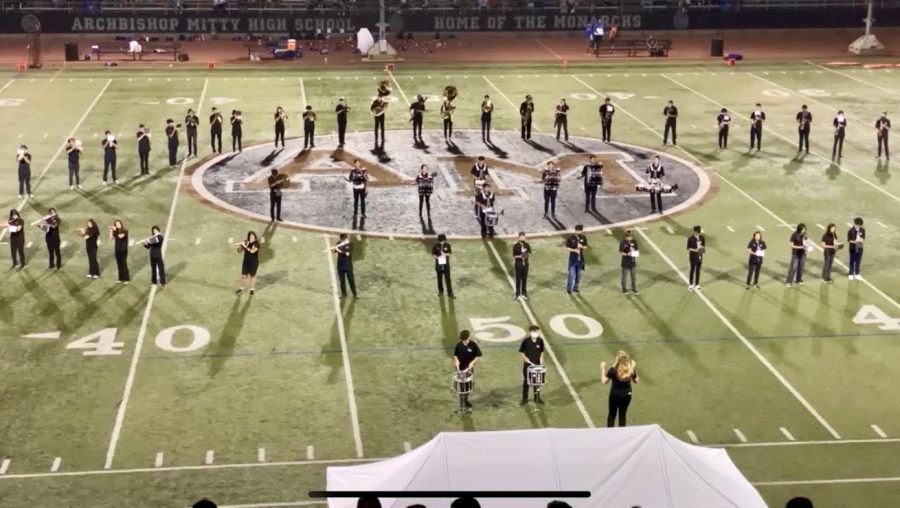Scatter Shows: Mitty’s Unconventional Marching Bands
The workings of Mitty’s Scatter Shows
October 18, 2022
Imagine watching a marching band that, in addition to simply playing, spreads onto the field into a display of shapes with themes and narration. These Scatter shows are a unique series of performances by the Mitty band during halftime at Mitty’s home football games. They involve a thrilling mix of visual and musical elements, in which bands “scatter” into formations on the field following narration.
In the initial stage of creating shows, the crew deliberates on a theme relating to current events and interests. For example, a recent one was based on “back to school,” but they also incorporated Disney characters for a fun, relatable twist. Additionally, they are open to suggestions during the brainstorming phase; each show is unique and does not stick to a particular formula.
Senior Maria George, writer and planner, explained that once they get recommendations from the team and decide on a final idea, they begin designing the show. Participants must be coordinated and ready to maneuver into shapes with their instruments. They might create a biohazard symbol to fit with the subject of The Walking Dead, with its theme song playing in the background. Many times, a classic “AM” logo hails the beginning of a school event.
The musical component is handled by two bands, directed by Mr. Mason Kimont. The individual classes rehearse formations, songs, and more. “Practicing is the hard part because it’s two different classes, so we don’t practice together until the night of the show,” says Mr. Kimont. This means that members must have trust in their teammates, along with confidence in themselves to perform. The mystery surrounding how it will actually transpire “makes it a little exciting,” he adds.
All of the elements must correspond to create one synergistic show. Writing is an important feature to plot out the flow and feeling of scatter shows; a thoughtful, concise seven-minute script ties everything together. It is generally done at the end of the process to convey an overarching short narrative or message to the audience, and direct the movement of the performers. Of course, there is more than a simple story. Senior Anya Danes, drum major for the band, explained that the value “mostly comes from making something complex, palatable, with good entertainment value.” This means having extra bits like jokes and clever puns.
Teamwork is a key component to make creativity work with the interests of the crew as a whole. “Being able to balance and check each other is mainly how the show writing team works. I appreciated how we fell into knowing our strengths and weaknesses, who can generate ideas, who can refine them, and being able to find familiar jobs for people,” Anya said.
The performing members are the heart of the scatter show, and each of them must effectively perform their part in order to create the experience. The crew is a valuable place of creative freedom–and an environment to practice one’s passions in music and show production. As Maria remarks, “It’s great working with the show writing team! Even if we are all super busy, it’s always fun to relax and let the creative and often silly juices flow as we work on the script together or as we plan out music and formations.”


